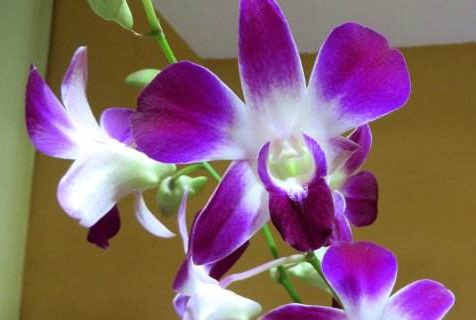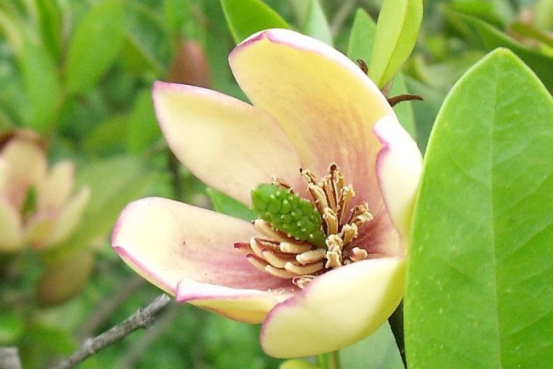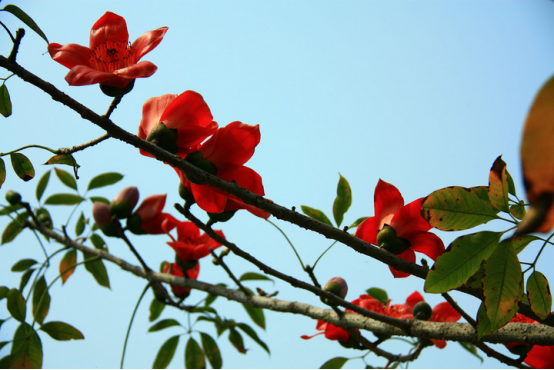Culture methods of Dendrobium
1. Soil
Dendrobium orchid soil requires loose and breathable soil, culture soil can be peat moss and charcoal, which is more suitable for plant growth.

two。 Watering
Dendrobium orchid needs sufficient water during its growth, especially in summer, it should be watered every two days, and if the soil is dry, it should not be watered too much in winter, so as not to cause rotting roots.
3. Light
Dendrobium likes the semi-overcast environment, spring and summer should pay attention to appropriate shading treatment, it is best to put in the place of astigmatism, must not be exposed in strong light, lest the plant wither and die.
4. Temperature
Dendrobium likes to be warm, the suitable temperature is 15-28 ℃, and the night temperature should not be lower than 10 ℃, otherwise it is not conducive to plant flowering.
5. Fertilizer application
Dendrobium likes thin fertilizer, once a month to apply liquid fertilizer, such as potassium dihydrogen phosphate solution, must not use too high concentration of fertilizer, winter temperature is low, should stop fertilization.
Culture methods of Dendrobium
Dendrobium, along with Cartland, Phalaenopsis and Wandai Orchid, are the four major tropical ornamental orchids, which is one of the largest genera in Orchidaceae. According to its biological characteristics and different ecological requirements, it can be divided into two categories: deciduous Dendrobium and evergreen Dendrobium.
There are many varieties of Dendrobium. At present, the common ornamental cultivation are Dendrobium candidum, Dendrobium candidum, Butterfly Dendrobium, Dendrobium nobile, Dendrobium candidum, Dendrobium candidum, Dendrobium candidum and so on. Dendrobium is an important variety of cut flowers and potted plants because of its beautiful flower shape and beautiful appearance.
1. Shading. Dendrobium often grows on tree trunks or rocks in tropical rain forests in its place of origin and prefers semi-shady environment. During the peak growth period in spring and summer, the sun can be shaded by 60% Mel 70%, but more sunlight is needed during the winter dormancy period. Generally, it can be shaded by 20% Mel 30%, or not.
2. Keep warm. Dendrobium likes high temperature and humidity. The overwintering temperature of deciduous Dendrobium can be as low as 10 ℃ or lower at night, while that of evergreen species should not be lower than 15 ℃. At the same time, attention should be paid to maintaining a large temperature difference between day and night (10-15 ℃). Too small temperature difference will seriously affect the growth and flowering of Dendrobium.
3. Watering. Dendrobium orchid needs plenty of water, but avoid being too wet, which will lead to poor plant growth, rotten roots and even death. Deciduous Dendrobium can be kept dry and watered less in winter, but the air humidity of potted materials should not be too low. Evergreen species need to keep plenty of water if the greenhouse temperature is high in winter.
4. Rational fertilization. Dendrobium likes to apply thin fertilizer frequently, applying mature cake fertilizer and water every 7-10 days during the growth period, or 0.1% all-element compound fertilizer outside the root. When deciduous species are dormant and evergreen species are forced to dormancy due to low temperature, fertilizer should be stopped.
How to culture Dendrobium orchid
Dendrobium is the most popular ornamental plant in the flower market, it originated in Australia and later introduced to all parts of the world. It has beautiful shape, bright color, elegant fragrance and high ornamental value, but usually want to raise Dendrobium at home. We must master the correct breeding methods, followed by a specific introduction of its breeding methods, we can understand how Dendrobium should be raised.
1. Temperature
At ordinary times, when raising the guardrail, we must pay attention to the temperature of the breeding environment, because this kind of plant will stop growing and enter a dormant state in the environment below five degrees. At ordinary times, the ambient temperature of Dendrobium should be between 25 and 36. If the temperature is too high, it will stop growing at more than 35 degrees.
2. Matrix
The cultivation of Dendrobium, a plant substrate, is also a particularly important condition. this plant likes a fertile substrate with good air permeability and good filterability. it is best to choose blue stone plus granular mud carbon and bark and other materials mixed together to make the base system, and then plant Dendrobium into it.
3. Fertilizer and water
When breeding Dendrobium orchid, watering also has certain attention, usually should abide by the principle of more spray and less drenching, dry in its matrix and then pour enough water at one time. Dendrobium is a kind of fertilizer-loving plant, but it is afraid of thick fertilizer, so it should be applied with thin fertilizer at ordinary times, and it is best to choose compound fertilizer with balanced nutrition. If the fertilizer is too thick, it will cause fertilizer damage and affect its normal growth.
4. Pay attention to ventilation
When cultivating Dendrobium, we must pay attention to the ventilation of the environment. Only moderate ventilation can accelerate the growth of Dendrobium and reduce the occurrence of diseases. In addition, it is best to water Dendrobium when it is ventilated, which is beneficial to the absorption of fresh air by Dendrobium.
5. Lighting
Dendrobium is a green plant that likes a semi-shaded environment. It can be placed in a sunny environment in spring and autumn, but in hot summer weather, too strong sunlight must be shaded, and the shade should be between 50% and 60.
- Prev

two。 Matters needing attention in cultivating Michelia mollissima
1. Michelia mollissima has thick roots and is not resistant to transplantation. when transplanting, it is appropriate to bring more soil balls and properly cut branches and leaves. If soil balls are loose during transplantation, branches and leaves must be re-cut in time, otherwise the plants are easy to die. two。 Michelia mandshurica is intolerant of early drying, thin scabies, afraid of waterlogging, and likes to fertilize the slightly acidic loam with loose soil and good drainage.
- Next

three。 Culture methods of kapok
1. Seed collection and treatment kapok fruit is grayish black when it is ripe, and the seeds of flowers can easily float around with cotton wool, so if you want to collect seeds in time, spread out and expose the seeds after harvest. A thousand seeds weigh about 47.5 grams and the germination rate is between 70% and 80%.
Related
- Fuxing push coffee new agricultural production and marketing class: lack of small-scale processing plants
- Jujube rice field leisure farm deep ploughing Yilan for five years to create a space for organic food and play
- Nongyu Farm-A trial of organic papaya for brave women with advanced technology
- Four points for attention in the prevention and control of diseases and insect pests of edible fungi
- How to add nutrient solution to Edible Fungi
- Is there any good way to control edible fungus mites?
- Open Inoculation Technology of Edible Fungi
- Is there any clever way to use fertilizer for edible fungus in winter?
- What agents are used to kill the pathogens of edible fungi in the mushroom shed?
- Rapid drying of Edible Fungi

